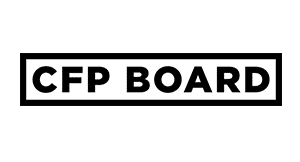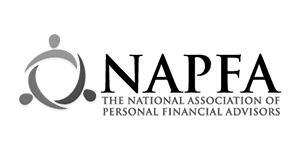By Steven Hiraga, CFP®
A Bit of Retirement Plan History
The 401(k) retirement plan, introduced in the Revenue Act of 1978, is still a relatively new workplace benefit. For example, employee-provided health insurance goes back to the early 1940s in response to concerns about inflation as the US started coming out of WWII. Going back even further, it was in 1911 to little fanfare that Pantasote Leather Co. started offering group life insurance policies to their 121 employees.
Over these past 40 years, 401(k) retirement plans have gradually surpassed employer pension plans as the retirement benefit of choice. They have grown in size and sophistication. They support businesses that were created specifically to service retirement plans and their participants. For many job-seekers, joining a company that offers a retirement plan benefit is table stakes. Despite all of this, there is still a retirement preparedness crisis in the United States. I believe this is because although most people know that they should be saving for retirement, much like they know they should diet and exercise, they sometimes need help getting started. The 401(k) can be confusing and intimidating as well as an easy can to kick down the road for somebody who has decades of career ahead of them. As a retirement plan advisor, I witness this routinely and have had conversations with plan participants in the twilight of their careers who are now facing an imminent retirement that is not sufficiently funded.
Plan Sponsor Responsibilities
I have also seen the result of what happens when 401(k) plan participants are forced to serve as their own investment advisor and are left to choose their own investments, oftentimes resulting in a poor choice of funds or inappropriate asset allocation. This can have a drastically negative impact on their retirement savings, leading to longer-than-expected careers or an unexpected (and unwanted) part-time job during retirement. Plan sponsors have learned that adding a 3(38) investment manager as a fiduciary to their plan is a big step in offering a fund lineup that is appropriate for the plan participants. Furthermore, the sponsor has then transferred that responsibility from the plan sponsor to a professional fiduciary who has the experience and qualifications for making those investment decisions, allowing the employer more time to focus on their business and worry less about plan compliance.
Investment management, however, covers only one of the fiduciary responsibilities of employers and retirement plan committees. To name a few, business owners who offer a 401(k) plan are required to:
- Follow the plan definition of compensation
- Make timely participant deferrals
- Enroll newly eligible employees timely
- Make matching contributions timely
- Make non-elective contributions timely
- Deliver disclosures annually
- Document all decisions made
- Confirm that all participants received proper communication to manage their account
- Note if the plan engaged in any prohibited transactions
- Identify any conflicts of interest
- Did service providers meet the disclosure requirements of 408(b)(2)
- Have all service agreements in writing
- Monitor that all service providers’ compensation is reasonable
- Did participant disclosures meet the requirements of 404(a)(5)
- Monitor that the recordkeeper is accounting for contributions accurately
- Monitor that the recordkeeper handles loans, withdrawals, and distributions accurately
- If applicable, monitor the 3(38) decisions for exercising a standard of care
- If applicable, monitor the 3(21) advice for exercising a standard of care
- Maintain the proper surety bond coverage required by ERISA
- Monitor that plan goals and objectives are being achieved
- Monitor that participants are being educated to properly manage their account
- Encourage enrollment and participation
- Monitor for excessive loans
- Monitor for excessive hardship withdrawals
Yes, this (not even comprehensive) list looks overwhelming. Offering a 401(k) plan can be a lot of work and responsibility. One couldn’t be blamed for thinking they are trying to discourage employers from offering retirement plans.
No, most employers are not checking off 100% of these responsibilities. Unfortunately, that is not a defense that will satisfy an inquiry by the Department of Labor. They will, however, allow for a plan sponsor to correct plan deficiencies at the time and cost of the employer of course. Those corrections drain time, money, and other resources from either the business owner or the employee responsible for administering the 401(k) plan, like an HR manager or CFO.
As already stated, with the proliferation of the 401(k) plan came the growth of an industry built to support adopting employers in the administration of their retirement plans. Most recordkeepers and third-party administrators do a sufficient job of providing guidance on how employers can meet their fiduciary obligations and for some tasks, will even complete them under the supervision of the employer. What recordkeepers and third-party administrators have historically refused to do is take on the fiduciary responsibilities and liability of any plan they work with. The buck has always stopped with the business owners and retirement plan committees.
Put simply, just as the flaw of the 401(k) was making employees serve as their own retirement investment advisor, it also forced employers to be expert 401(k) administrators; a role neither party has ever desired or been qualified to do.
Introducing the Pooled Employer Plan
Thankfully, with the passing of 2020’s SECURE Act, there were some changes made that allow relief to employers who currently offer, or want to offer, their employees a retirement plan benefit but are wary of the fiduciary liability that comes with it. Namely, Pooled Employer Plans (PEP) allow for a structure for multiple employers to join a single plan that is sponsored by a single service provider. The separate Form 5500 and audit requirements that were mandated by the DOL for individual 401(k) plans will not apply to a PEP. The PEP sponsor will file a single Form 5500 and submit a single plan audit.
In order to monitor this role, the law created a new entity that will be stepping into the role of the plan sponsor, referred to as the Pooled Plan Provider (PPP). The PPP is named in the document as the sponsor, plan administrator, named fiduciary, and person/entity responsible for performing all administrative duties. The PPP will be required to register with the Treasury and DOL.
To put this plainly, an employer can now hire a PPP to take on all of the fiduciary responsibilities that come with administering a 401(k) retirement plan. By taking on all of that responsibility, they also take on the risk and if a mistake is made, the PPP will have to correct the mistake and pay any fine. The administration of your 401(k) plan can now be put in the hands of a professional fiduciary, ideally as it should have been designed from the start in 1978.
(Learn more about Smith Bruer United, a Pooled Employer Plan)
In addition, to incentivize employers to create a retirement plan to offer their employees if they do not yet have one, the SECURE Act created a 3-year tax credit of up to $5,000 per year to reimburse costs associated with starting a retirement plan. Claim another $500 for adding an auto-enrollment feature to your plan. Further details can be found on the IRS website.
As a final bonus, by pooling together, small retirement plans are now going to achieve the pricing benefits that have previously only been available to large and mega retirement plans ($100 million and larger). Historically, the fees associated with 401(k) plans have been based on the size of the plan, and a larger plan meant lower pricing. Joining a PEP will allow a plan with only $1 million in assets to immediately get pricing it never could have before. A start-up plan is now much easier for a business owner to consider, especially with the new tax credits.
Final Thoughts
These are extraordinary steps that have the potential to greatly expand the use of employer-based retirement plans, improve the quality of participant education, and keep money in the pockets of businesses and their employees. I am hopeful that over time, these are steps that will lead to more and more Americans saving enough for retirement; supporting the US economy, creating wealth, and passing that wealth on to their heirs. Only time will tell of its success but I am happy for the SECURE Act and am happy to be along for the ride.






